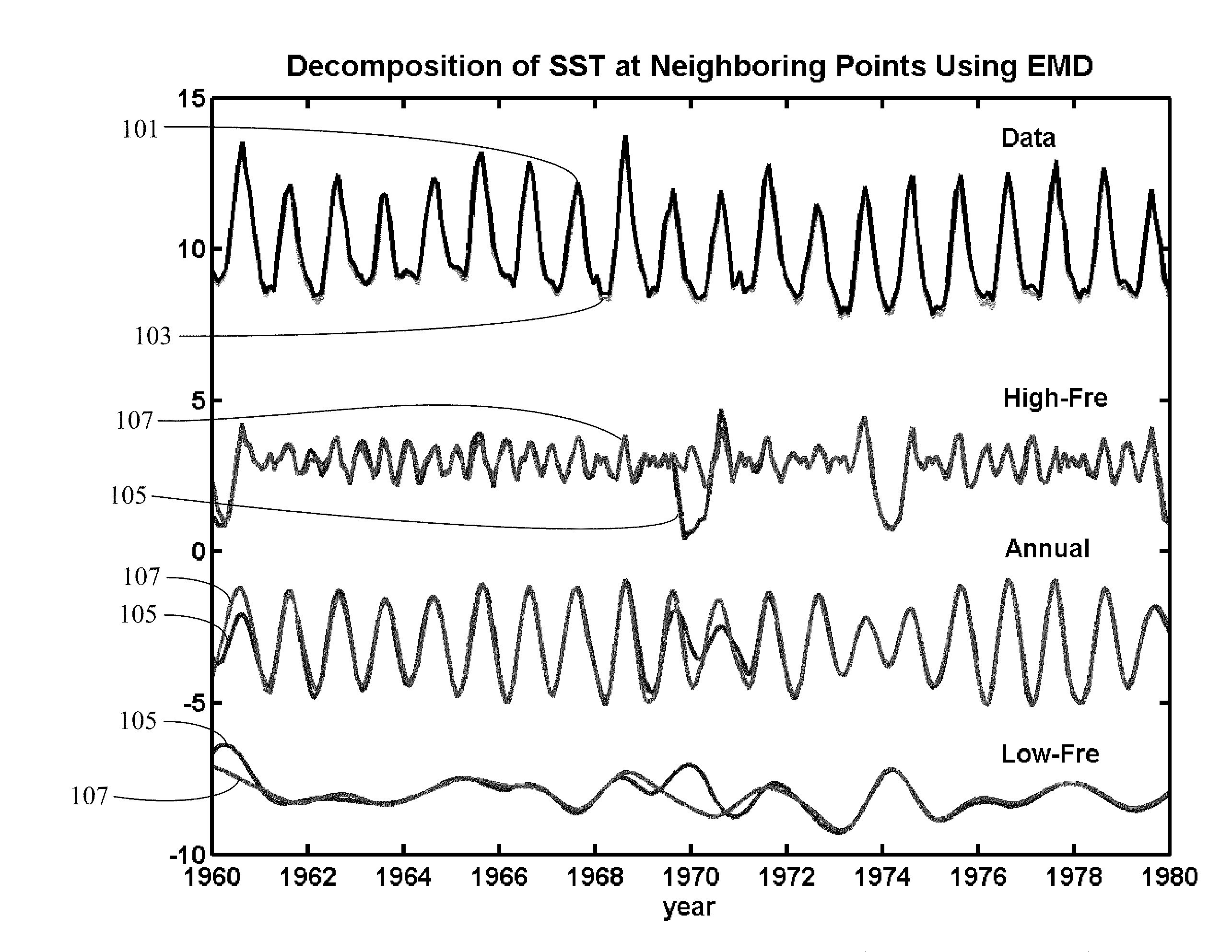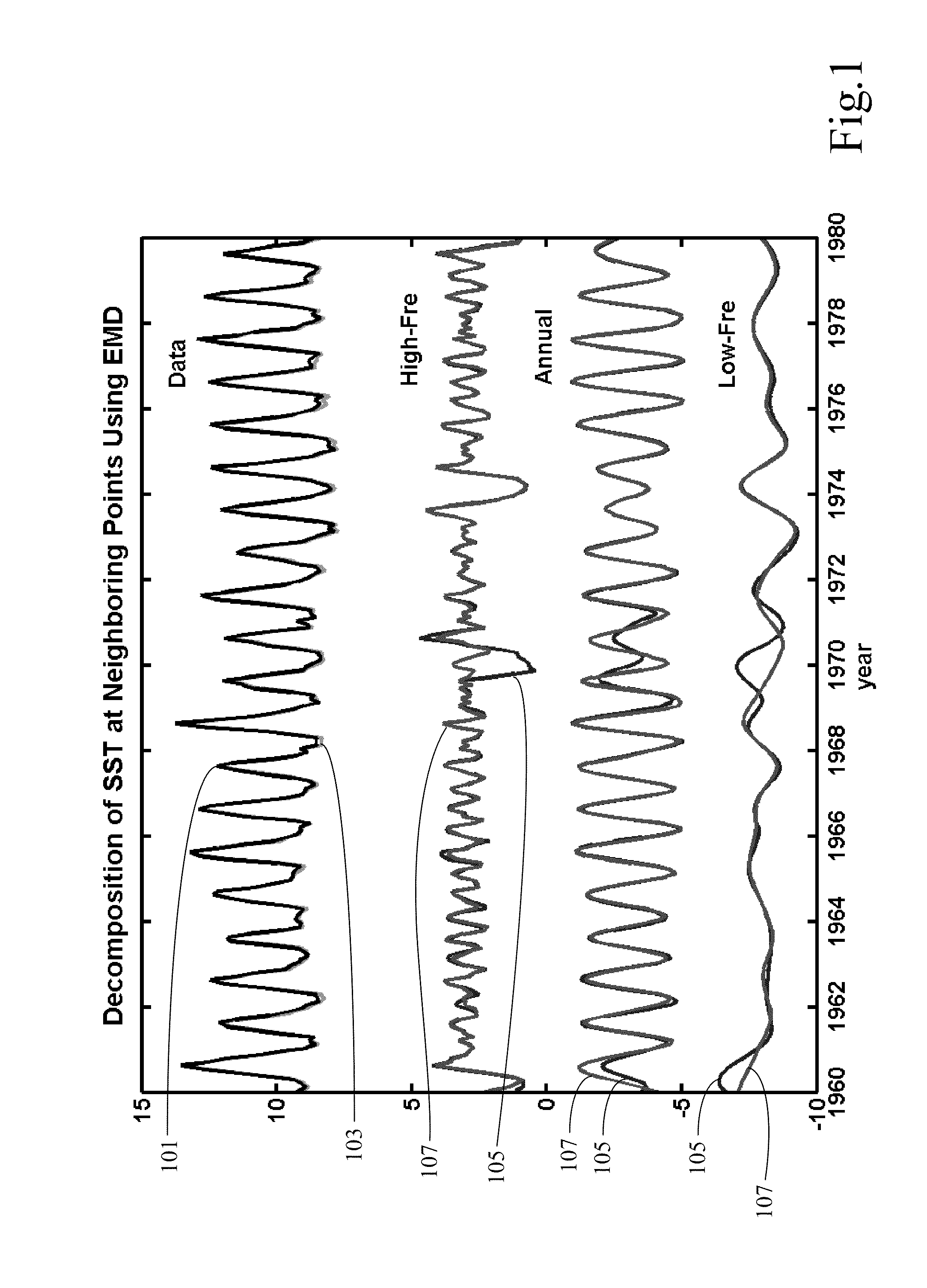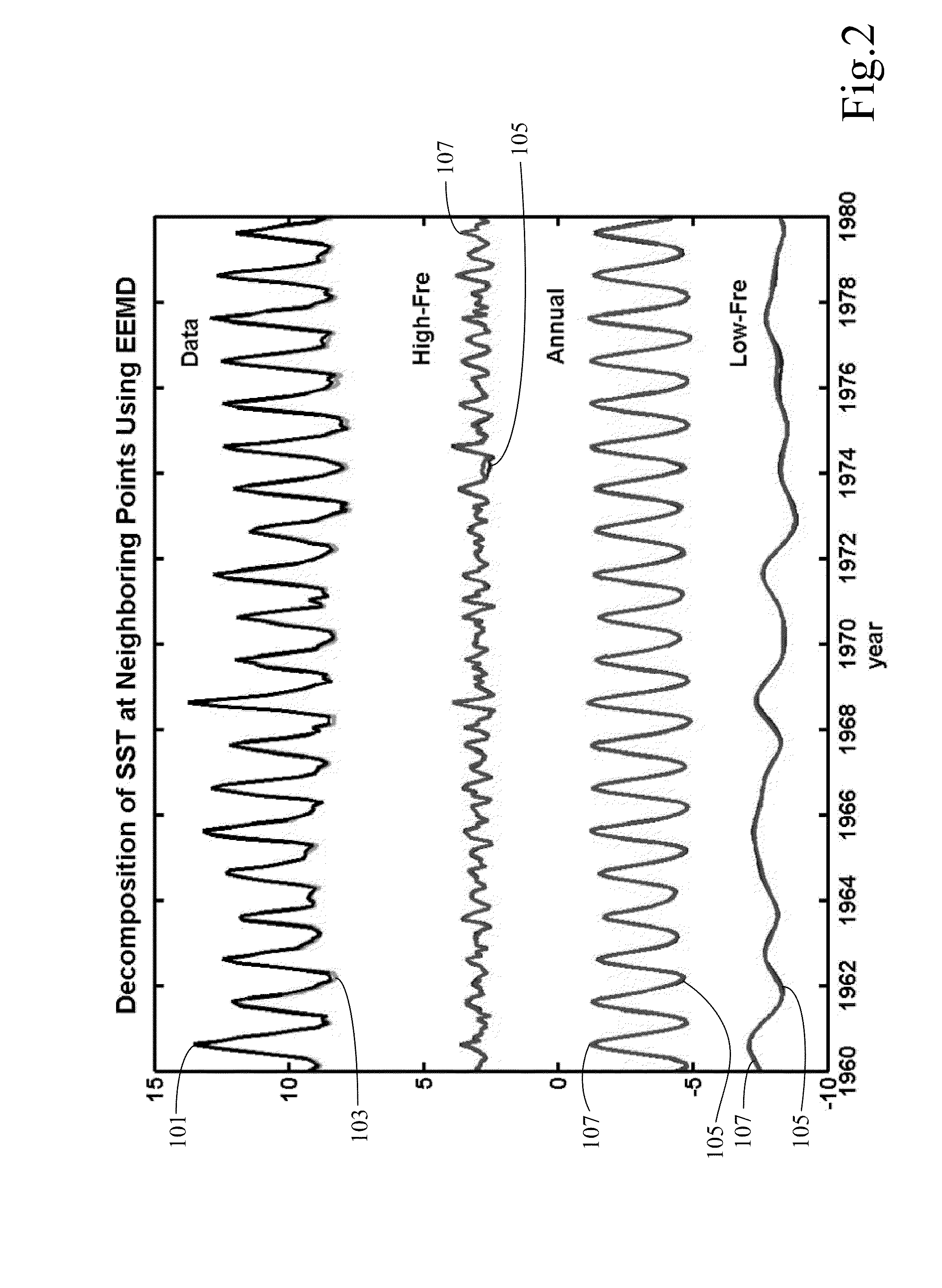Data Decomposition Method and Computer System Therefrom
a data and computer system technology, applied in the field of physical data decomposition, can solve the problems of hilbert transformation, the instantaneous frequency of a signal could lose its physical meaning, and the currently available genuine bemds, as those mentioned earlier, have several difficulties
- Summary
- Abstract
- Description
- Claims
- Application Information
AI Technical Summary
Problems solved by technology
Method used
Image
Examples
Embodiment Construction
[0039]Reference will now be made in detail to the present preferred embodiments of the invention, examples of which are illustrated in the accompanying drawings. Wherever possible, the same reference numbers are used in the drawings and the description to refer to the same or like parts.
[0040]An apparatus, computer program product, and methods of decomposing and analyzing multi-dimensional temporal-spatial data and multi-dimensional spatial data (such as images or solid with variable density) are proposed here. For multi-dimensional temporal-spatial data, EEMD is applied to time series of each spatial location to obtain IMF-like components of different time scales. All the ith IMF-like components of all the time series of all spatial locations are arranged to obtain ith temporal-spatial multi-dimensional IMF-like component.
[0041]For two-dimensional spatial data or images, f(x,y), we consider the data (or image) as a collection of one-dimensional series in x-direction along locations...
PUM
 Login to View More
Login to View More Abstract
Description
Claims
Application Information
 Login to View More
Login to View More - R&D
- Intellectual Property
- Life Sciences
- Materials
- Tech Scout
- Unparalleled Data Quality
- Higher Quality Content
- 60% Fewer Hallucinations
Browse by: Latest US Patents, China's latest patents, Technical Efficacy Thesaurus, Application Domain, Technology Topic, Popular Technical Reports.
© 2025 PatSnap. All rights reserved.Legal|Privacy policy|Modern Slavery Act Transparency Statement|Sitemap|About US| Contact US: help@patsnap.com



